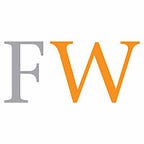Good ESEF news! (Now that’s something I never thought I’d write)
By Claire Bodanis, Director, Falcon Windsor
Don’t get too excited, they haven’t canned the whole pointless ESEF exercise* — too much water under the bridge for that. But, following the techies’ success in finding a way of turning our lovely, well designed PDFs into XHTML for tagging and filing purposes, the last hurdle of making ESEF as painless as possible, namely directors’ approval, has just been cleared, thanks to good sense prevailing at BEIS (Department for Business, Energy and Industrial Strategy).
A reminder — what is ESEF again?
For those readers not super familiar with all this reporting jargon, let me give you some brief background. A new regulation came into force for all listed companies across Europe (including the UK — we’re part of it despite Brexit) that annual reports for year ends from 1 January 2020 must be published in XHTML, with financial information published in a taggable format, namely iXBRL. It’s the practical consequence of the EU Transparency Directive, that ‘requires issuers listed on regulated markets to prepare their annual financial reports (AFR) in an ESEF’, or European Single Electronic Format. And the powers that be abandoned the PDF format and instead chose XHTML/iXBRL as the better option to ‘facilitate accessibility, analysis and comparability of annual financial reports’ (by machine readers, that is).
My beef with it was always that it assumed the ESEF would replace the PDF, on the basis that the whole annual report was just a pile of information that could be compared by machine, rendering the human reader unnecessary. It therefore disregarded the all-important narrative, or story, that’s at the heart of the principles-based system of reporting we have in the UK.
In the last year, our technical colleagues (thank you) found a way of turning the human-readable PDF into a machine-readable document, and apply the tags, which was half the battle. But the sticking point was whether directors would have to sign off the converted, XHTML, tagged version, which would add time and complexity to the process, as well as being utterly daft: how in practice would directors actually do this?
BEIS’s view: directors can sign off the (human readable) PDF as usual, and the (machine readable) ESEF can be created afterwards
My view of this sticking point, which I argued in our response to the FCA consultation on ESEF (see blog, November 2019), was this. It’s not a sticking point at all. Treat the ESEF as just another version to be produced post sign-off — like the print version or the Companies House version — with Boards delegating this duty in the same way they delegate other reporting sign-off duties.
The good folks at BEIS have clearly come to the same conclusion (perhaps they read our response?!), stating that the directors (being humans not machines), can read and sign off the PDF, with the tagging and creation of the ESEF being done afterwards. Hurray.
Here’s their summary:
“Any electronic tagging requirements can be applied after the directors have satisfied themselves that the accounts meet the requirements of the Companies Act and give a true and fair view of the company’s assets, liabilities, financial position and profit or loss as required by the Act. In terms of their process, companies may choose to create a single filing, a parallel tagged document, or the creation of a tagged document once the annual report has been completed in paper format. Notwithstanding the various approaches that companies may take, in all cases, the directors’ confirmation relates to the human-readable version of the annual report and therefore does not extend to consideration of the iXBRL tagged data.”
I don’t think they actually mean paper format, but you get the idea. I’m even beginning to feel I might have been a tiny bit harsh about regulators in our new book, Trust me, I’m listed … but then again…
Don’t miss our launch webinar tomorrow!
On that note, if you managed to miss the zillions of emails and LinkedIn posts about it, the webinar launch of Trust me, I’m listed is tomorrow, Thursday 2 July, 12.30–1.15pm. Peter Swabey will be interviewing me and Sir Donald Brydon, who wrote the foreword, about all things reporting. Do register and come along!
* For why ESEF is a classic case of regulation failing to achieve its objective, and other discussions, please see the ESEF case study in Trust me, I’m listed.
Originally published at https://www.falconwindsor.com on July 1, 2020.
